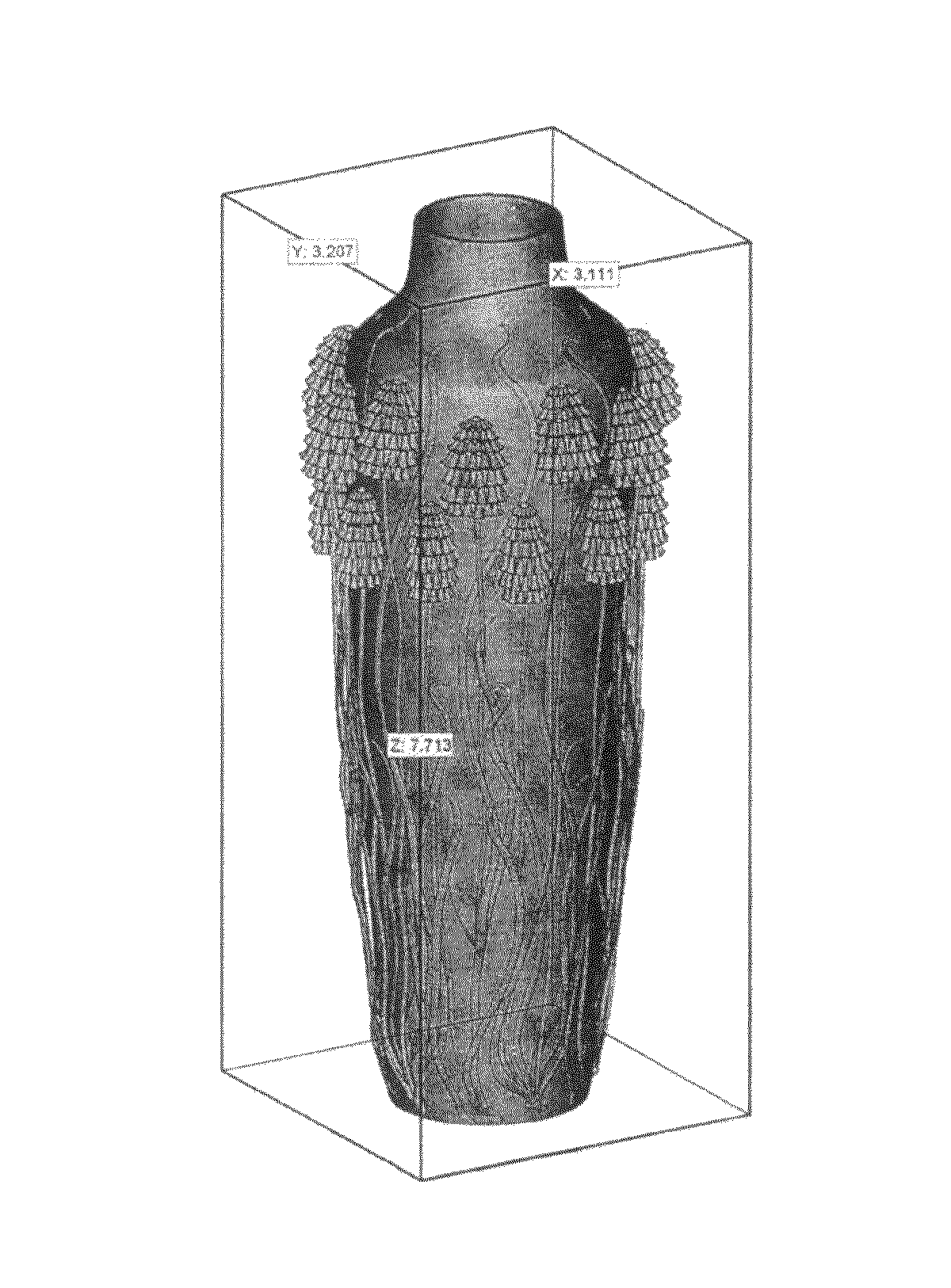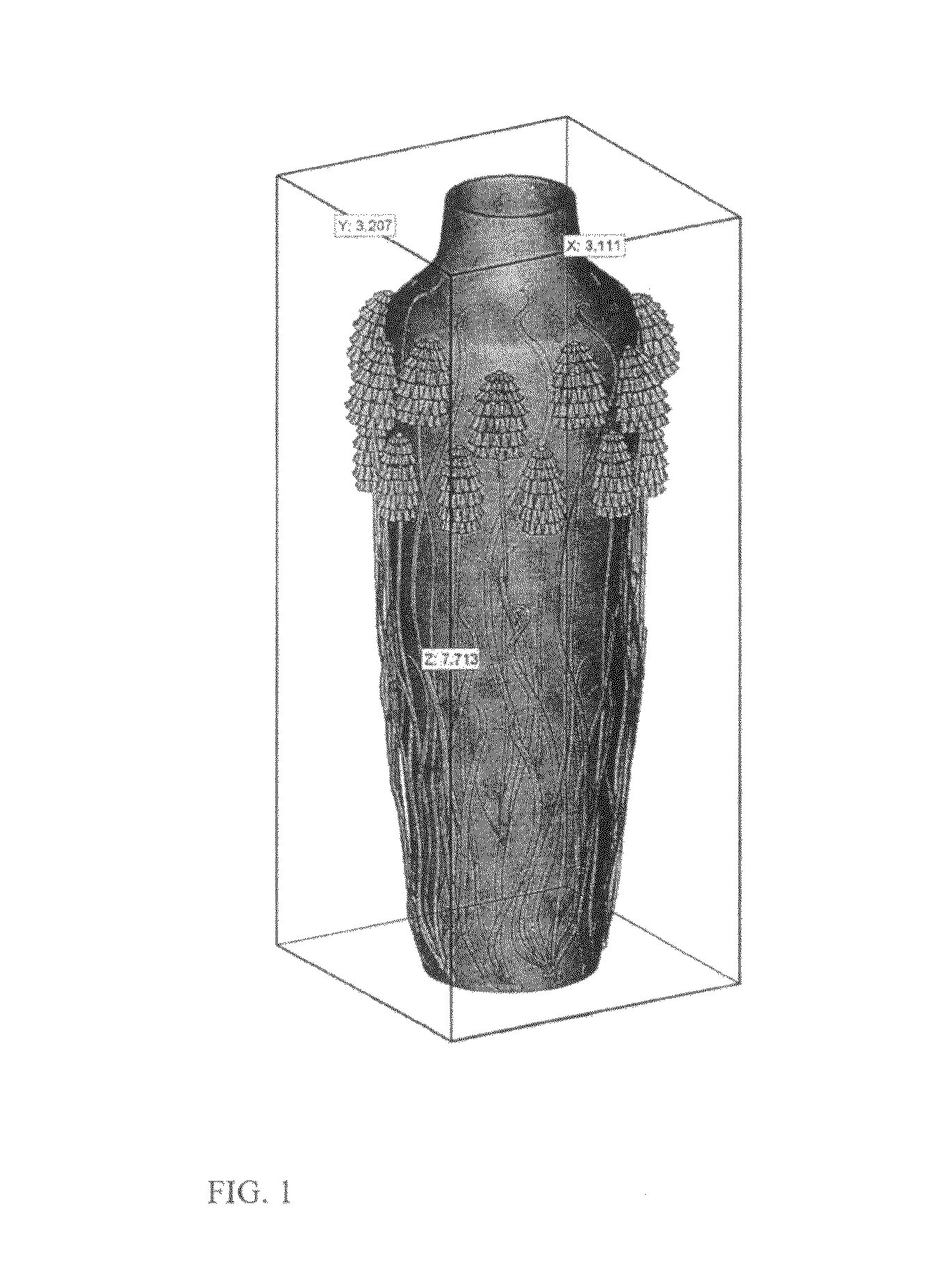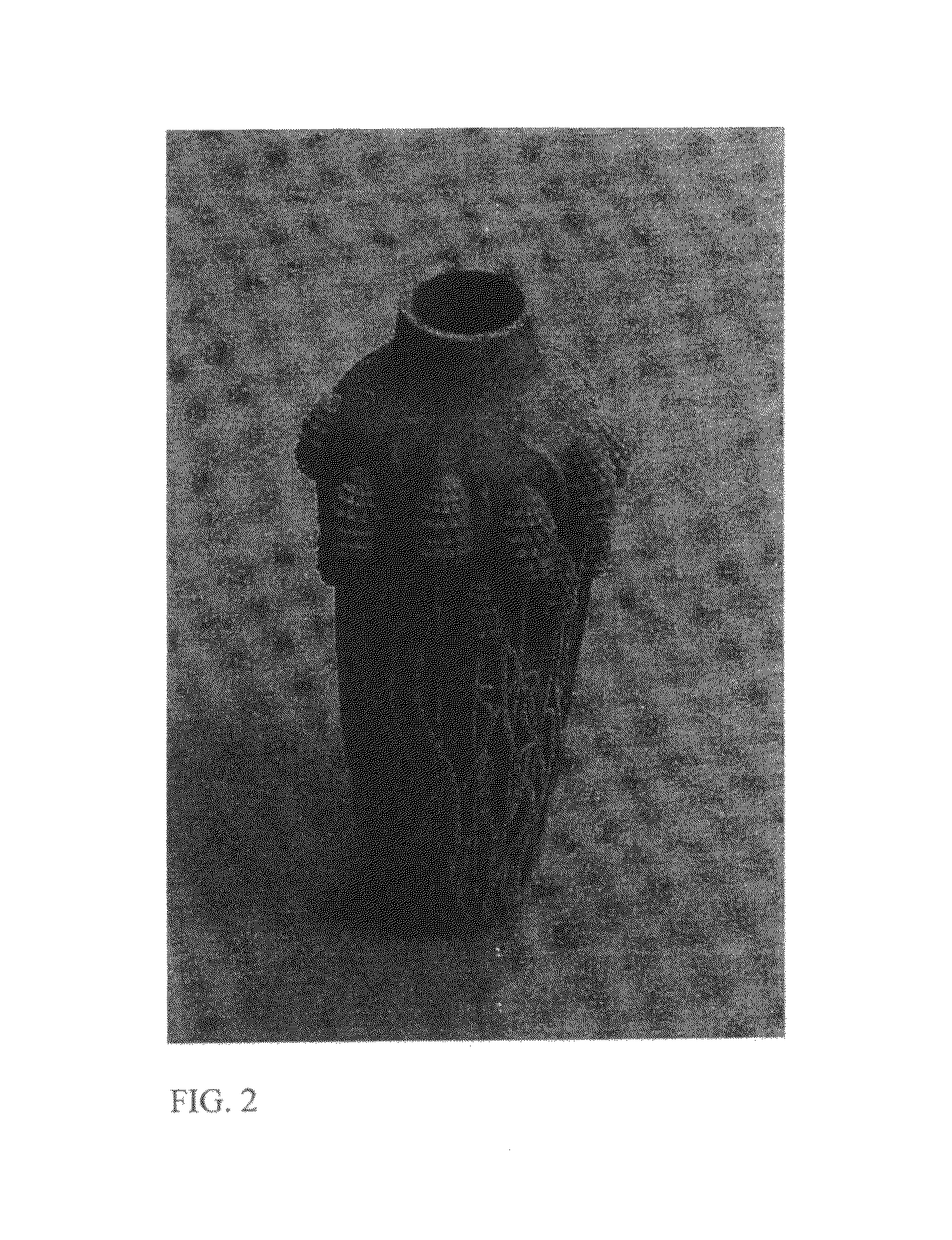Three-dimensional printing glass articles
- Summary
- Abstract
- Description
- Claims
- Application Information
AI Technical Summary
Benefits of technology
Problems solved by technology
Method used
Image
Examples
example 1
[0027]A glass vase was produced in accordance with an embodiment of the present invention in the following manner. All processing was done in an air atmosphere.
[0028]The representation of a vase shown in FIG. 1 was printed on a Prometal R2 printing platform, available from Prometal, LLC, of Irwin, Pa., US, 15642, having a 200 millimeter by 200 millimeter by 150 millimeter deep build box, using Spheriglass® 3000A powder, available from Potters Industry, Inc. of Valley Forge, Pa., US, 19482-040. This powder is a soda lime glass in the form of spherical particles with an average particle size of 35 micrometers, and having a glass transition temperature of approximately 730° C. As depicted in FIG. 1, the vase was circumscribed by a rectangular box having a height of 7.713 inches, a width of 3.111 inches, and a depth of 3.207 inches.
[0029]The vase was printed in 100 micron layers with the long axis oriented along the machine's print axis, using S-Binder version 4, from Prometal, LLC, of ...
example 2
[0046]The process described in Example 1 was used to make the glass “grape vine” tile that is depicted in FIGS. 5-9.
[0047]The tile “template” on which all features are affixed has an original print size of 6 inches by 6 inches by ¼ inches, and a final sintered size of 5.8 inches by 5.8 inches by 0.19 inches. Calculation of the percent change of these resultant volumes indicates the final part size is 71% of the original part volume. This dimensional data, coupled with the translucency shown in FIG. 8, as well as the SEM micrographs shown in FIG. 9 (which show that there is negligible residual porosity on the surface of the parts), indicate the glass grape vine tile was near full density.
PUM
| Property | Measurement | Unit |
|---|---|---|
| Temperature | aaaaa | aaaaa |
| Temperature | aaaaa | aaaaa |
| Density | aaaaa | aaaaa |
Abstract
Description
Claims
Application Information
 Login to View More
Login to View More - Generate Ideas
- Intellectual Property
- Life Sciences
- Materials
- Tech Scout
- Unparalleled Data Quality
- Higher Quality Content
- 60% Fewer Hallucinations
Browse by: Latest US Patents, China's latest patents, Technical Efficacy Thesaurus, Application Domain, Technology Topic, Popular Technical Reports.
© 2025 PatSnap. All rights reserved.Legal|Privacy policy|Modern Slavery Act Transparency Statement|Sitemap|About US| Contact US: help@patsnap.com



